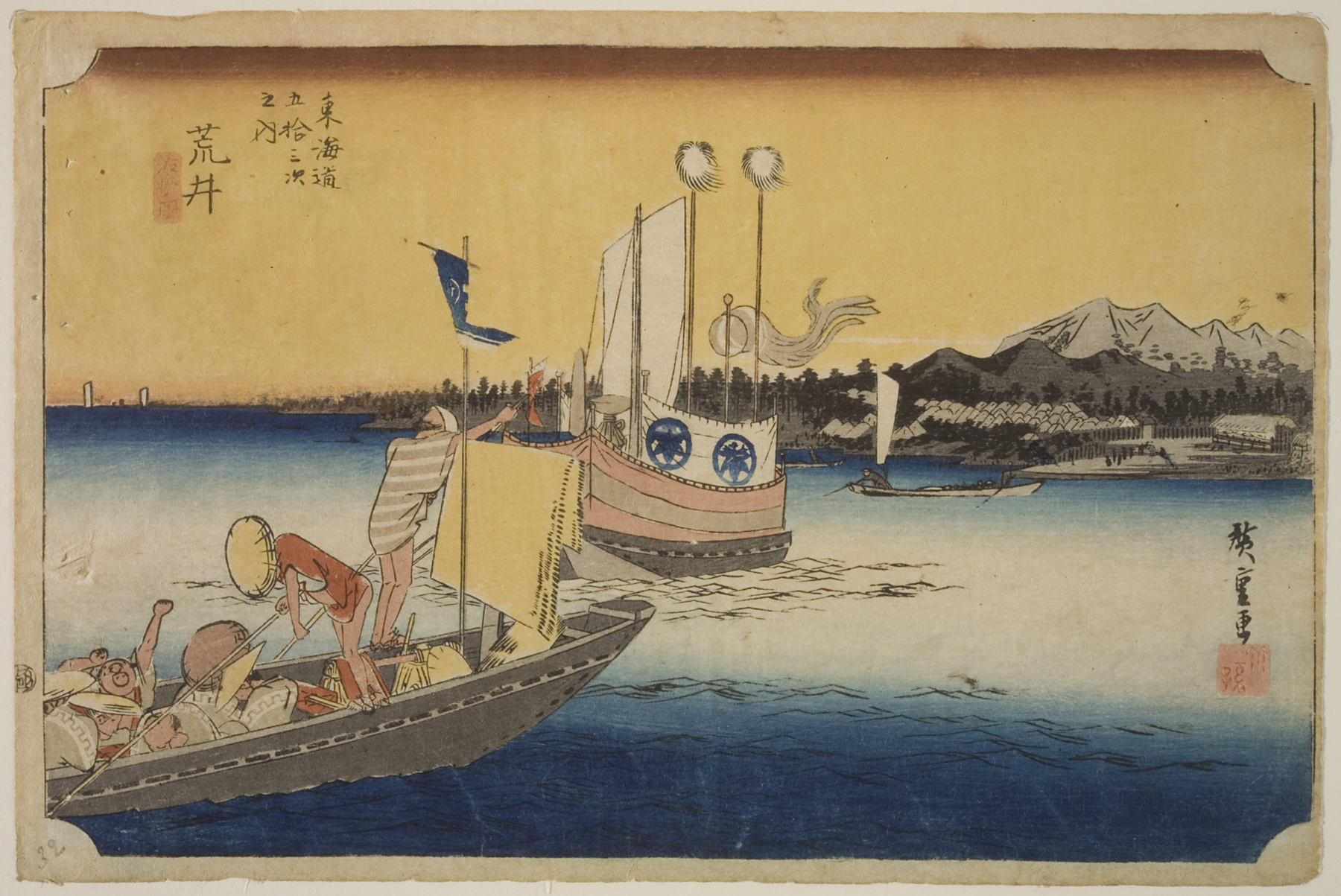#32 Arai: watashi bune no zu (Ferry Boats near Arai), Utagawa Hiroshige
Artwork Overview
Utagawa Hiroshige, artist
1797–1858
#32 Arai: watashi bune no zu (Ferry Boats near Arai),
1833–1834, Edo period (1600–1868)
Portfolio/Series title: Tōkaidō gojūsantsugi no uchi (The 53 Stations of the Tokaido Road), popularly known as Hōeidō Tōkaidō (Great Tokaido)
Where object was made: Japan
Material/technique: color woodcut
Dimensions:
Image Dimensions Height/Width (Height x Width): 227 x 357 mm
Image Dimensions Height/Width (Height x Width): 8 15/16 x 14 1/16 in
Sheet/Paper Dimensions (Height x Width): 245 x 368 mm
Sheet/Paper Dimensions (Height x Width): 9 5/8 x 14 1/2 in
Mat Dimensions (Height x Width): 14 x 19 in
Image Dimensions Height/Width (Height x Width): 227 x 357 mm
Image Dimensions Height/Width (Height x Width): 8 15/16 x 14 1/16 in
Sheet/Paper Dimensions (Height x Width): 245 x 368 mm
Sheet/Paper Dimensions (Height x Width): 9 5/8 x 14 1/2 in
Mat Dimensions (Height x Width): 14 x 19 in
Credit line: William Bridges Thayer Memorial
Accession number: 1928.7318
Not on display
If you wish to reproduce this image, please submit an image request









